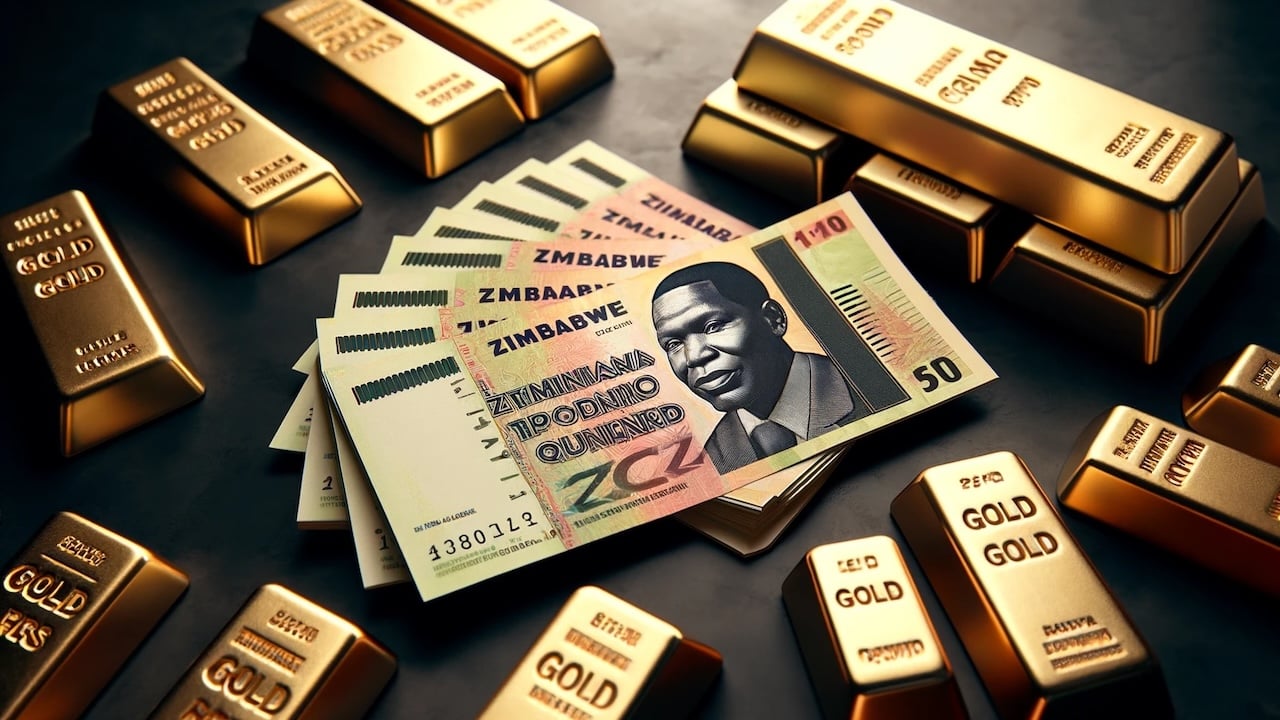(Mike Maharrey, Money Metals News Service) Last month, Zimbabwe officials introduced a gold-backed currency in an effort to stabilize the country’s economy.
At the time, I warned that a gold-backed currency would be a great step, but that it wasn’t going to solve Zimbabwe’s problems unless the government changed its ways.
So far, things don’t look good.
Government officials are already pushing miners in the African nation to produce more gold. This would allow the government to expand the money supply.
In other words, just one month into the gold-backed currency experiment, the government is already pushing for inflation.
What Is the ZiG?
The ZiG, also known as Zimbabwe Gold, is a structured currency backed primarily by 2.5 tons of gold along with other forex reserves including $100 million USD.
The Zimbabwe government introduced the ZiG at a rate of 13.56 per dollar. It is currently trading at 9.96 ZiG to a dollar.
The currency will ultimately be available in denominations of 1, 2, 5, 10, 50, 100, and 200 ZiG. The country also plans to mint ZiG coins.
As the Zimbabwe African National Union-Patriotic Front (Zanu PF) explains it, “Given that Zig is a structured currency deriving its value from gold (a valuable asset), it is likely to maintain a stable value, ceteris paribus. The value of zig against USD therefore appreciates or depreciates as gold price increases or decreases at the international market. Given the stability of gold price, the zig is more likely going to be a stable in value currency.”
Zimbabwe’s Monetary Malfeasance
The hope is the ZiG will stabilize a Zimbabwe monetary system that has been brutalized by bad government policy.
The country has a long history of rampant inflation. The Zimbabwean dollar (RTGS) lost about 800 percent of its value against the dollar in 2023 alone.
Hyperinflation totally wiped out the value of the Zimbabwe dollar in the early 2000s. In 2009, the government abandoned its currency and adopted foreign currencies – primarily the U.S. dollar (or, more accurately, the Federal Reserve Note).
The African nation reintroduced the Zimbabwe dollar, also known as the bond note, in 2016. It was to be backed by the U.S. dollar loan facility. Then-central bank governor John Mangudya swore the new Zimbabwe dollar would remain on par with the greenback. But the bond note crashed when the government once again began printing excess money. By mid-July 2019, price inflation had increased to 175 percent.
Can a Zebra Change Its Stripes?
The ZiG is supposed to slam the door on the country’s monetary malfeasance. Backing currency with a hard asset limits money creation. The government can’t create more notes unless it gets more gold. A gold standard puts a natural brake on monetary expansion.
But a new currency alone won’t do the trick.
The hard part is changing the mentality of politicians and bureaucrats who rely on the expansion of the money supply to support spending and grow government. A gold standard only works as long as government officials leave it alone. As Americans learned in the 1930s, governments can quickly unravel a gold standard when it suits their purposes.
With the dollar tied to gold, the Federal Reserve couldn’t significantly increase the money supply during the Great Depression. It wasn’t able to simply fire up the printing press as it can today. The Federal Reserve Act required the central bank to hold enough gold to back at least 40 percent of the notes in circulation.
But a lot of Americans were redeeming paper dollars for physical gold because they were losing faith in the paper currency. As a result, the central bank was low on gold and up against the limit.
This put President Franklin D. Roosevelt between a rock and a hard place. He wanted the Fed to increase the money supply and support government spending, but this was limited by this partial gold standard.
To solve the problem, FDR took a number of steps to untether the dollar from gold, including attempting to remove most gold from private ownership.
This is a cautionary tale for Zimbabweans. The ZiG is only as strong as the government’s commitment to maintain the gold backing.
And it already appears the government is pushing to expand the money supply.
According to a Bloomberg report, government officials are pushing the country’s gold miners to up their output.
“This new currency is anchored on gold production, we have to determine ways to increase production,” Mines and Mining Development Minister Winston Chitando said in a meeting with miners earlier this month.
Since late 2022, Zimbabwe miners have been required to pay a portion of their royalties to the state in gold. An increase in mine production will increase the country’s gold supply. This would theoretically allow the government to increase the amount of ZiG in circulation while maintaining the current ratio of gold backing.
Simply put, an increase in the gold supply amounts to inflation.
The good news for Zimbabweans is gold is difficult to dig out of the ground. Even with a concerted effort, the government won’t be able to significantly expand the money supply with gold mining alone. According to government officials, Zimbabwe produced 30.1 tons of gold in 2023. The goal for this year is 40 tons.
The bad news is we’re just two months into the ZiG experiment and government officials are already publicly pushing for a way to expand the money supply. This reveals the mindset of the Zimbabwe government, and it appears that hasn’t changed much with the introduction of the new currency. One has to wonder how long it will be before officials take more aggressive actions to wiggle out from the limits imposed by gold.
Mike Maharrey is a journalist and market analyst for MoneyMetals.com with over a decade of experience in precious metals. He holds a BS in accounting from the University of Kentucky and a BA in journalism from the University of South Florida.

